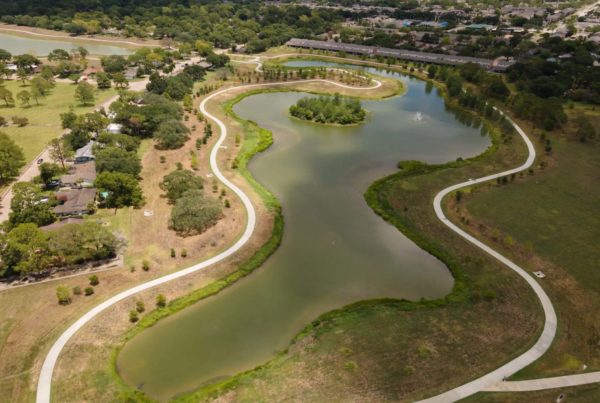The impact of climate change on average temperatures already affects many parts of the world, and those effects are sure to escalate. But a new study warns that “an extreme heat belt” across the U.S., including parts of Texas, could mean that effective temperatures climb as high as 125 degrees Fahrenheit on at least one day a year by 2053.
Jeremy Porter is chief research officer at the First Street Foundation, the nonprofit organization that conducted the study. He told Texas Standard that these increases in temperature will lead to other extreme events, for which the affected areas should prepare. Listen to the interview above or read the transcript below.
This transcript has been edited lightly for clarity:
Texas Standard: Hotter temperatures as a result of climate change been predicted for some time. Tell us a little bit about how this analysis is different.
Jeremy Porter: We are building off of a NOAA report that just came out a couple of months ago that actually showed that we’re about two degrees Fahrenheit above where we were on average at the mid-century, around 1950. And it seems like a small number, but oftentimes when we communicate those numbers of averages, people have a hard time understanding exactly what they are. And the other side of that is when people say that we’re going to continue the increase in temperatures out to 2100 – that’s also very abstract for people to understand.
So we focused on near-term population impacts out only 30 years, and we did focus on extreme heat events like that extreme heat that you mentioned.
Let’s talk about how that looks on a map: Where does this heat belt extend to, and how is Texas included?
The East Texas, Louisiana [area], all the way up through southern Wisconsin and a lot of Illinois is part of this extreme heat belt. And this area of the country is actually notoriously vulnerable to extreme levels of heat. If you go back just this year and look at some of the relentless heat waves that we saw throughout the summer, you would notice Missouri, Arkansas, western Kentucky and Illinois are all part of that area. And it has to do with the topography of the country there. The high plains are on the west, the Appalachian Mountains on the east. And there’s almost a low bowl of elevation where humidity is able to settle. And that humidity then interacts with rising temperatures to create these extreme heat indices.















